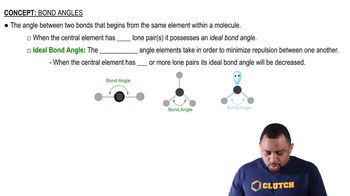Here are the essential concepts you must grasp in order to answer the question correctly.
VSEPR Theory
Valence Shell Electron Pair Repulsion (VSEPR) Theory is a model used to predict the geometry of individual molecules based on the repulsion between electron pairs in the valence shell of the central atom. According to this theory, electron pairs will arrange themselves as far apart as possible to minimize repulsion, leading to specific molecular shapes.
Recommended video:
Molecular Shapes and VSEPR
Molecular Geometry
Molecular geometry refers to the three-dimensional arrangement of atoms within a molecule. It is determined by the number of bonding pairs and lone pairs of electrons around the central atom, which influences the overall shape, such as linear, bent, or tetrahedral. For H2Se, understanding its molecular geometry helps in predicting its physical and chemical properties.
Recommended video:
Molecular Geometry with Two Electron Groups
Bond Angles
Bond angles are the angles formed between adjacent bonds in a molecule, which are influenced by the molecular geometry. In H2Se, the presence of lone pairs on the selenium atom affects the bond angles between the hydrogen atoms, leading to a bent shape. Understanding bond angles is crucial for predicting how molecules interact and behave in different chemical environments.
Recommended video:
 Verified step by step guidance
Verified step by step guidance


